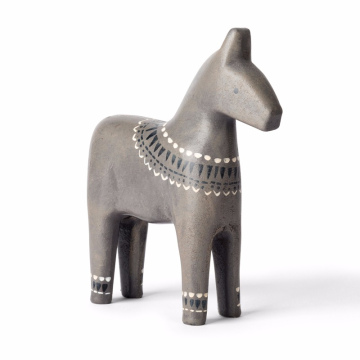Introduction to Spanish Cuisine
Spain boasts a culinary heritage that is as rich and diverse as its culture and history. The evolution of Spanish cuisine can be traced back through various influences, including the Romans, Moors, and indigenous peoples, which have all contributed to an intricate tapestry of flavors and techniques. This blending of cultures has helped forge a unique gastronomic identity that sets Spain apart as a premier destination for food lovers.
Geographically, Spain is divided into several regions, each with its own distinct climate and agricultural products. From the lush pastures of the north, where dairy products and fresh seafood abound, to the sun-drenched Mediterranean coast known for its fragrant olive oil and vibrant vegetables, regional diversity plays a significant role in the foods people enjoy. The heart of Spanish cuisine lies in its regional dishes, which highlight local ingredients and time-honored recipes, often passed down through generations.
Communal dining is a cherished tradition in Spain, where meals are often a social affair. Spaniards frequently gather around the table to share not only food but also laughter and stories, making every meal a celebration. Tapas, small plates that encourage sharing and tasting, exemplify this culture of communal dining. The practice of enjoying meals together fosters a sense of community and connection, reflecting the importance of relationships within Spanish culture.
Moreover, significant cultural events and festivals in Spain often feature traditional foods that are integral to the celebrations. From the seafood paella of Valencia to the hearty cocido of Madrid, these dishes are not just meals; they embody the history and identity of their respective regions. As we delve deeper into the iconic Spanish foods, it becomes clear that each dish carries with it the story of the land, its people, and their culinary traditions.
Must-Try Iconic Dishes
Spanish cuisine is a vibrant tapestry of flavors and traditions, showcasing a variety of iconic dishes that reflect the country's rich cultural heritage. Among these, paella stands out as one of the most renowned. Originating from the Valencia region, this rice dish is traditionally prepared in a wide, shallow pan, allowing the rice to absorb a multitude of flavors. Paella typically includes ingredients such as saffron, chicken, rabbit, and seafood, making it a versatile option that can cater to diverse palates. Each region in Spain has its own variation, with some incorporating local seafood or vegetables, emphasizing the importance of regional ingredients.
Another staple of Spanish cuisine is tapas, small plates that offer a delightful way to enjoy a variety of flavors in a single meal. These bite-sized portions are meant for sharing and can range from olives and cheeses to more elaborate dishes such as patatas bravas, which are fried potatoes served with a spicy sauce. The concept of tapas highlights the social aspect of dining in Spain, as enjoying these dishes often accompanies lively conversations among friends and family. The flexibility of tapas allows for regional creativity, with each area presenting its unique takes on this traditional food format.
Lastly, gazpacho represents the refreshing side of Spanish cooking. This cold soup, primarily made from tomatoes, cucumbers, peppers, and garlic, is particularly popular during the hot summer months. Originating from Andalusia, gazpacho combines rustic ingredients blended to create a smooth and invigorating dish. Variations exist throughout Spain, with some regions adding bread or different vegetables, showcasing the locality's agricultural produce. Each of these iconic dishes not only tantalizes the taste buds but also provides a glimpse into the diverse cultural identities that shape Spanish cuisine.
Desserts and Sweet Treats
Spanish cuisine is not only renowned for its savory dishes but also for its delightful desserts that cater to every sweet tooth. Among the most iconic sweet treats in Spain is the churro, a fried pastry often enjoyed for breakfast or as a late-night snack. Traditionally, churros are served with a cup of thick hot chocolate for dipping, making for a comforting and indulgent experience. The fusion of crispy exterior and soft dough reflects Spain's culinary expertise, and variations like chocolate-filled churros have emerged, showcasing the evolving nature of this beloved treat.
Another treasured dessert is flan, a creamy caramel custard that dates back to ancient Roman times. This classic dish represents the blending of cultures; it has Spanish, Moorish, and even Latin American influences. The smooth texture and rich flavor of flan have made it a staple in many Spanish households, especially during gatherings and celebrations. Traditionally, it is served chilled, with a drizzle of caramel sauce enhancing its sweetness. Preparing flan requires skill, but the outcome is undeniably rewarding.
Lastly, the tarta de Santiago, which hails from the region of Galicia, is a striking almond cake that celebrates the city's patron saint. Commonly adorned with the cross of Saint James, this dessert is often served during festivals and special occasions. The recipe typically features ground almonds, sugar, and eggs, yielding a moist and nutty flavor profile. Tarta de Santiago can be paired nicely with a dusting of powdered sugar and a side of fresh fruit, providing a vibrant presentation.
These iconic Spanish desserts are more than just indulgences; they embody the rich history and traditions of Spanish culture. As you explore these sweet treats, consider trying your hand at their recipes for a taste of Spain right in your kitchen.
Where to Enjoy Spanish Cuisine
Experiencing authentic Spanish cuisine requires a blend of exploration and engagement with the local culture. Spain is known for its vibrant culinary scene, offering endless opportunities to savor traditional dishes. To fully immerse yourself, consider visiting local markets, renowned restaurants, and bustling food festivals, each providing unique flavors and experiences.
Local markets, such as La Boqueria in Barcelona or Mercado de San Miguel in Madrid, are excellent places to start. These markets feature a wide array of fresh produce, meats, cheeses, and ready-to-eat tapas. Wander through the stalls, sample various offerings, and converse with the vendors, who can often share stories about their products. This connection to the local culinary arts enhances one's appreciation for Spanish cuisine.
When it comes to restaurants, seeking out family-run establishments can be particularly rewarding. These venues tend to focus on traditional recipes passed down through generations, offering a genuine taste of regional specialties. Regions like Andalusia excel in dishes such as gazpacho and fried fish, while Valencia is famous for paella. Be sure to ask locals for their recommendations, as they often know hidden gems far from the tourist path.
Tapas bars are a quintessential part of Spanish dining culture, and approaching them with an open mind can lead to delightful discoveries. When visiting these establishments, consider ordering a variety of small plates to share among your group. This encourages conversation and allows you to sample multiple dishes, deepening your understanding of the diverse culinary traditions in Spain.
Food festivals provide another exceptional opportunity to enjoy Spanish cuisine. Events like La Tomatina or the Feria de Abril offer visitors a lively atmosphere filled with localized food and drink. Engaging with the community at these festivals not only enriches your taste experience but also connects you with the culture and traditions that define Spain.








